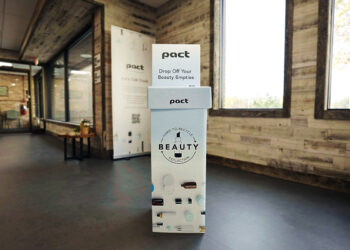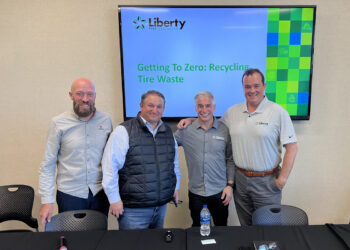Two of the sustainability world’s most influential figures opened the Resource Recycling Conference Tuesday with presentations that gave attendees a dose of inspiration as well as a glimpse into global materials recovery initiatives that keep profitability top of mind.
In one of the most anticipated sessions of the 2014 conference, William McDonough and Rob Kaplan delivered illuminating insights into the recycling world today.
McDonough is an architect and author of the influential 2002 environmental manifesto “Cradle to Cradle: Remaking the Way We Make Things.” Though much of the discussion in New Orleans this week has been centered on nitty-gritty recycling realities like resident outreach and program funding strategies, McDonough went interstellar in his address, pulling in an anecdote about his work with NASA to develop a space station for Mars exploration and breaking down Einstein’s theory of relativity.
He also managed to discuss the discovery of DNA, a humanitarian collaboration with Brad Pitt and subpar packaging for kale chips.
It was all meant to help illustrate McDonough’s point that the recycling industry — and all other sectors — should focus first on acting according to values and principles. Reduce, reuse and recycle is a powerful starting point, McDonough noted, but the industry needs to tack on another alliterative slogan: “redesign, renew and regenerate.”
“It’s the executive’s job to do the right thing,” he said. “We have to use commerce to make peace with the world.”
Kaplan, meanwhile, explained how the world’s largest retailer is trying to take some of the lofty ideals mentioned by McDonough and brings them into real-world practice.
Due to some technical snafus, the Walmart wunderkind had to improvise through the first several minutes of his presentation without his prepared slides, but he effectively moved forward and explained that Walmart has determined more than 90 percent of its environmental impact can be made through the supply chain.
Kaplan said the company has surveyed 100 suppliers in 150 categories and found that group consumes 8 billion pounds of plastic for packaging materials annually. Those supplying companies reported using an average of 30 percent post-consumer resin in their plastics but that they can grow that number by 16 percentage points in the next five years.
Kaplan said such improvements would equate to an extra 1 billion pounds of recycled plastic being consumed by suppliers in a half decade. And he added that through initiatives like the corporate-backed Closed Loop Fund, the retailer aims to help municipalities capitalize on effective materials recovery.
“We’ve turned our waste streams into profit centers,” Kaplan said, “and cities can do that too.”
As a whole, the session likely gave recycling advocates in the audience the feeling that they have the support of a pair of powerful minds.
“You’re the people who deal with chaos everyday,” said McDonough. “It comes in as an undefined system and you have to deal with it. … You have one of the hardest jobs in the world, but designers like me are here to help.”























